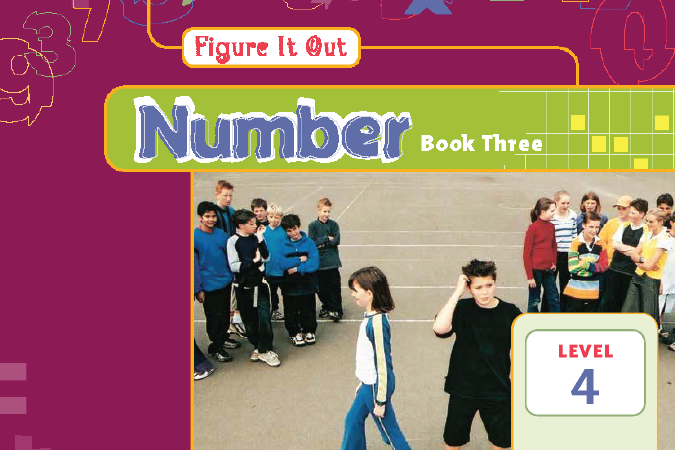Awesome athletes
This is a level 4 number link activity from the Figure It Out. It is focused on ordering decimals to 2 decimal places. A PDF of the student activity is included.

About this resource
Figure It Out is a series of 80 books published between 1999 and 2009 to support teaching and learning in New Zealand classrooms.
This resource provides the teachers' notes and answers for one activity from the Figure It Out series. A printable PDF of the student activity can be downloaded from the materials that come with this resource.
Specific learning outcomes:
- Order decimals to 2 decimal places.
Awesome athletes
Achievement objectives
NA4-6: Know the relative size and place value structure of positive and negative integers and decimals to three places.
Required materials
- Figure It Out, Link, Number, Book Three, "Awesome athletes", page 13
See Materials that come with this resource to download:
- Awesome athletes activity (.pdf)
Activity
The context for this activity is likely to be familiar for students, although a brief discussion would be useful to make sure the students realise that the fastest time (that is, the lowest number) is the winner for the running events and the highest or longest jump is the winner for the jumping events. The following questions could be used for this:
- “Who wins in running events: fastest time or slowest time?”
- “Who wins in a jumping event: shortest or longest distance?”
- “Which is faster: 15.12 second or 15.21 seconds? Why?”
Alternatively, you could begin by putting forward the following scenario:
- Luke suggests that the best way to work out who is the champion is to add up the times and distances of each event for each competitor, and the one with the most points wins. Luke would get 104.4 points (16.1 + 82.41 + 4.6 + 1.29 = 104.4).
- Is this a good way to work out the winner? Why or why not?
The students could experiment with several different scoring systems to answer question 3. As an extension, they could investigate scoring systems in athletics and sports such as rugby and cricket and discuss whether they think the systems are fair.
1.
a.
Place |
100m (s) |
400m (s) |
Long jump (m) |
High jump (m) |
|---|---|---|---|---|
1st |
Jane 14.84 |
Jane 80.07 |
Nikki 4.67 |
Sarah 1.32 |
2nd |
Nikki 15.02 |
Sarah 80.15 |
Mere 4.60 |
Nikki 1.30 |
3rd |
Olive 15.06 |
Leilani 80.60 |
Jane 4.54 |
Mere 1.29 |
4th |
Sarah 15.12 |
Nikki 81.30 |
Olive 4.15 |
Leilani 1.27 |
5th |
Leilani 15.35 |
Olive 81.35 |
Sarah 4.06 |
Jane 1.26 |
6th |
Mere 16.10 |
Mere 82.41 |
Leilani 3.98 |
Olive 1.19 |
b. Jane and Nikki are first equal (7 points each).
2.
Nikki would be the champion. The results would look like this:
Nikki |
5 + 3 + 6 + 5 |
= |
19 |
|---|---|---|---|
Jane |
6 + 6 + 4 + 2 |
= |
18 |
Sarah |
3 + 5 + 2 +6 |
= |
16 |
Mere |
1 + 1 + 5 + 4 |
= |
11 |
Olive |
4 + 2 + 3 + 1 |
= |
10 |
Leilani |
2 + 4 + 1 + 3 |
= |
10 |
3.
Answers will vary. Two suggestions are:
- 1st = 10, 2nd = 6, 3rd = 4, 4th = 3, 5th = 2, 6th = 1 (This would mean Jane had 26 points and Nikki 25.)
- Points are awarded only to the first four places: 1st = 10, 2nd = 6, 3rd = 4, 4th = 3. (In this case, Nikki would have 25 and Jane 24.)
The quality of the images on this page may vary depending on the device you are using.


